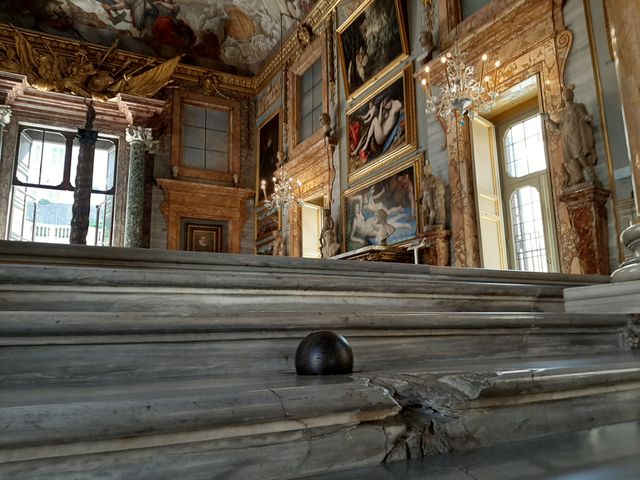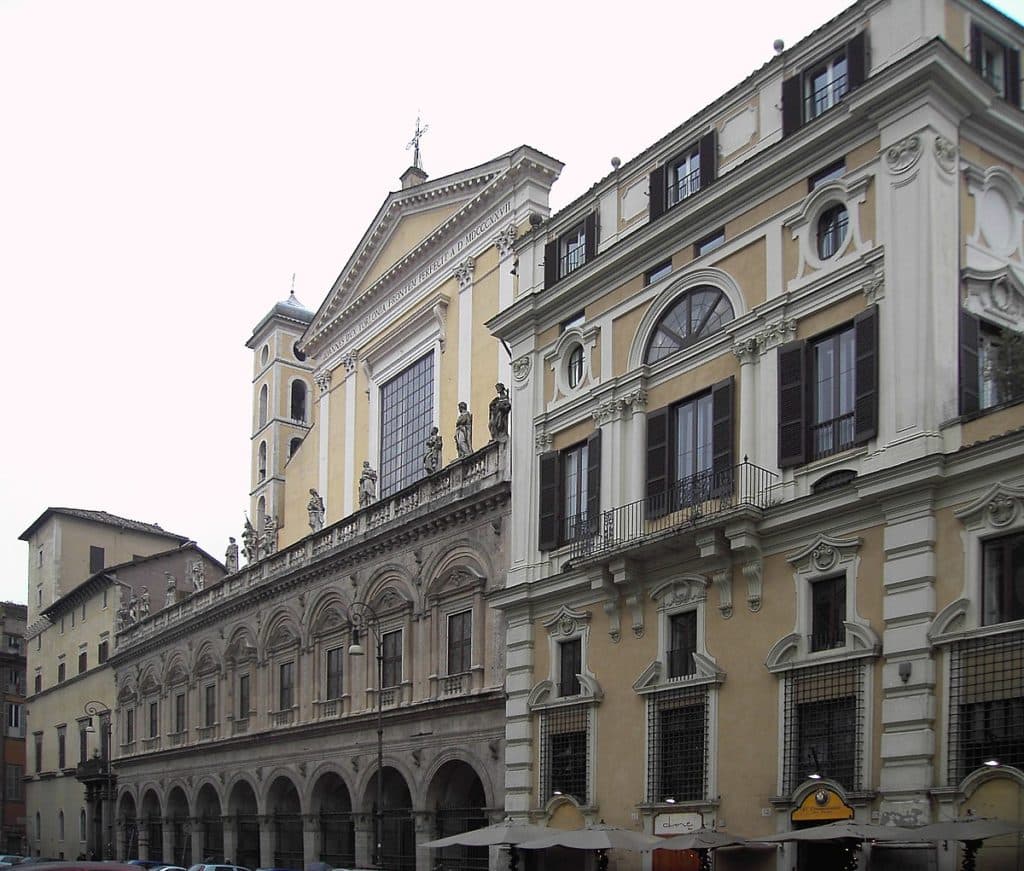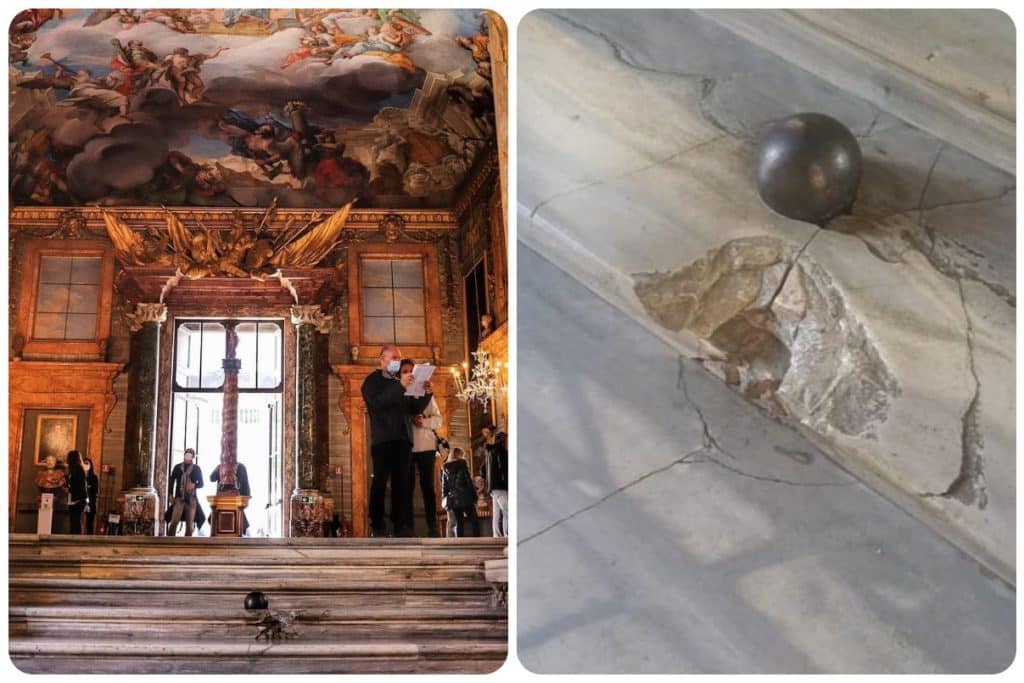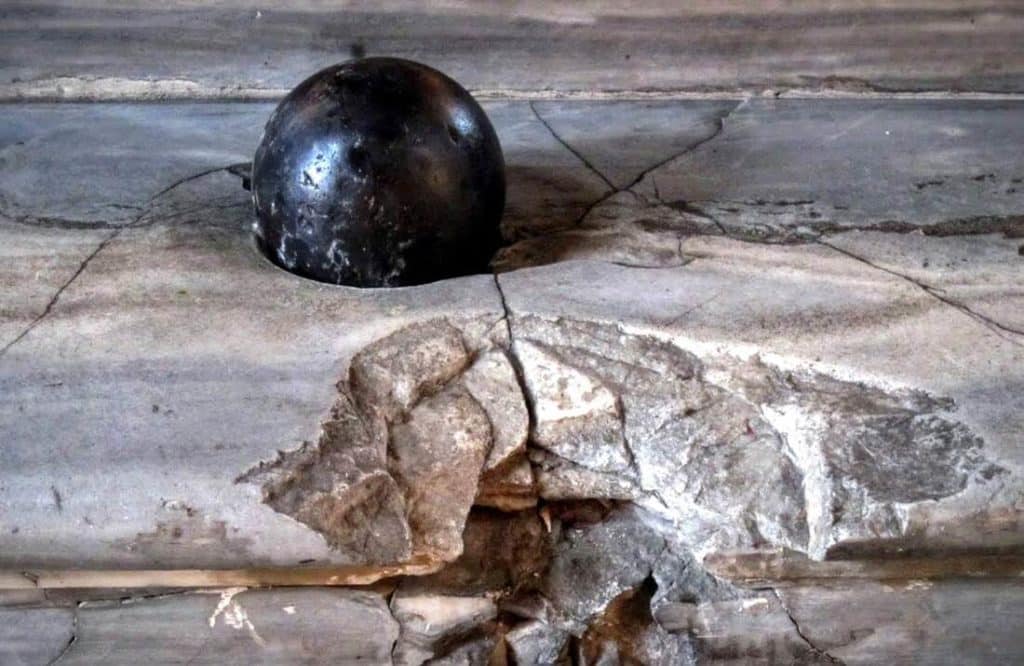On the staircase of the Colonna Gallery there is still a cannonball fired by the French in 1849
Visiting the wonderful Galleria Colonna in Rome ( which is part of the Colonna Gallery ), it will be possible to notice that on the flight of stairs that descend towards the Great Hall, there is a cannonball, which is located exactly in the same point where it was thrown. in 1849, during the period of the Roman Republic. Why is it there? Let’s go and find out together.

Palazzo Colonna occupies the block between piazza Santi Apostoli, via Ventiquattro Maggio, via Quattro Novembre and piazza della Pilotta, not far from the Trajan’s Column (which probably gave the family its name).
An authentic jewel of the Roman Baroque, the Colonna Gallery (several pictorial masterpieces are preserved here, which we will ideally visit another time in a separate article) was commissioned in the mid-1600s by Cardinal Girolamo I Colonna and his nephew Lorenzo Onofrio Colonna. It was inaugurated by the son of Lorenzo Onofrio, Philip II, in the year 1700. The original project is by the architect Antonio del Grande; it was then integrated, in the last decades of the 1600s, by Gian Lorenzo Bernini, Johan Paul Schor and Carlo Fontana. The palace is still the residence of the Colonna family.

As reported by the official site of the monument, from the very beginning, the Gallery was conceived as a large representative room to worthily celebrate the victory of the Christian fleet over the Turks at the battle of Lepanto in 1571. The commander of the papal fleet, Marcantonio II Colonna, he is depicted at various times on the entire vault of the Great Hall of the Gallery and in the Hall of the War Column.
The cannonball of the marble staircase was fired from the Janiculum Hill by the French army, under the orders of General Oudinot, who entered from Porta San Pancrazio and came to help Pope Pius IX by the republican insurgents, including Mazzini, Armellini and Saffi, who occupied for a few months the historic center of Rome.

In 1849, Rome got rid of the pope to proclaim a republic led by a revolutionary constitution. For a few months in Rome they tried to apply the ideals deriving from the French Revolution. The revolutionaries decided to oust the pope and to establish a true Roman Republic. The project was wrecked precisely by the intervention of the French.
The Colonnas were not very close to the papacy. Because of their political choice, the building, which today houses a magnificent art collection, was targeted by artillery shells.

The pontiff, Pius IX, reacted to the revolutionary demands and, with the help of the French, resumed his post with cannon shots. The French managed to regain control of Rome after fighting against men led, among others, by Garibaldi. The ball was most likely fired from the Janiculum. On July 4, 1849, the Republic was dissolved and the pope resumed his dominion.
